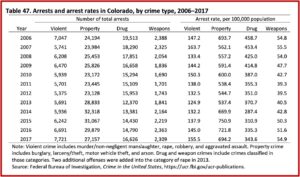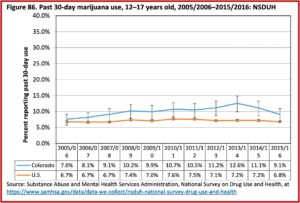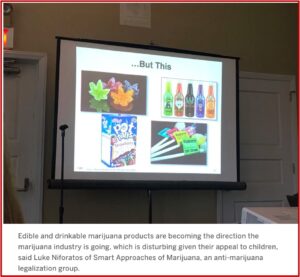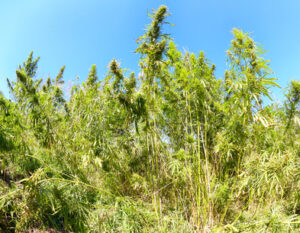Should Pennsylvania Go ‘Full Colorado’ with Marijuana? Part 2
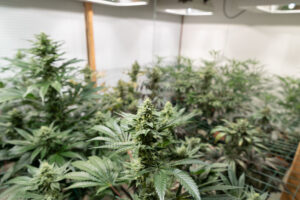
In Part 1, we began to examine some of the potential impact to Pennsylvania if the state were to go “full Colorado,” unreservedly legalizing recreational marijuana as the state of Colorado has done. We started out with the September 3, 2020 call by Governor Tom Wolf for the legalization of marijuana use for adults in Pennsylvania. Lieutenant Governor John Fetterman, who stood beside him, also voiced his unreserved support of legalization. But as we looked at the hope for legalization in Pennsylvania, we saw the reality of what had already happened in other states that legalized recreational marijuana was dramatically different.
On the Facebook page for the “Pennsylvania Family Council” dated September 25, 2019, is a shot video that presents a quick series of sound bites and facts about going full-on Colorado: “Lt. Gov. Fetterman wants ‘full Colorado’ with marijuana.” He thinks the legalization of recreational marijuana is “the right thing for Pennsylvania.” You can also view the video on YouTube. We’ll look at most, if not all of the information that this short video throws at you. If there was something I failed to cover, it can be found within the links presented in either Part 1 or here in Part 2 of this article.
According to a 2018 state report, “Impacts of Marijuana Legalization in Colorado,” seizures of Colorado-sourced marijuana were most likely to occurs in states bordering or near Colorado: Kansas, Nebraska, and Wyoming. At least 3 made it to Pennsylvania. Seizure used to be almost exclusively marijuana flower, accounting for over 90% of the reported seizures in 2012. By 2017, 58% of seizures were for flower, 26% were for concentrates/hash and 16% were for edibles. See the following table from the report.
Overall crime rates for property remained stable from 2012 to 2017, but violent crime increased 20%. An increase in the number of aggravated assaults was primarily responsible for the increase in the violent crime rate while larceny was responsible for the increase in property crime rates. SAM (Smart Approaches to Marijuana) reported the crime rate in Colorado has increased 11 times faster than the rest of the nation since legalization. “Marijuana arrests of young African-American and Hispanic youth have increased since legalization (Colorado Department of Public Safety [CDPS], 2016).” See the table below.
SAM reported that in Colorado, the number of drivers intoxicated with marijuana and involved in fatal traffic accidents increased 88% from 2013 to 2015. “Driving under the influence of drugs (DUIDs) have also risen in Colorado, with 76% of statewide DUIDs involving marijuana” (Colorado State Patrol [CSP], 2017). Washington State had a doubling of drugged driving fatalities. In Oregon, 50% of all drivers assessed by drug recognition experts (DRE) in 2015 tested positive for THC. See “Driving Under the Influence of Cannabis” for more information on DUIDs.
The proportion of Colorado youth who reported marijuana use in the past 30 days was significantly higher than the national average. This held true from 2008/2009 through 2015/2016. Colorado was in the top 20% of states for youth marijuana use. See the following figure. Smart Approaches to Marijuana (SAM) reported that since legalization, Washington, Oregon Alaska and Washington, DC have had past-month use of marijuana above the national average among youth aged 12-17. See the chart below.
“Reefer Madness or Pot Paradise?” also noted how politics was infiltrated by marijuana legalization. With a new, marijuana-friendly governor in office, Colorado legislators passed six marijuana laws in 2019 that included approving marijuana-delivery services; out-of-state investment and publicly traded cannabis companies; the creation of pot lounges—“marijuana hospitality establishments”—where marijuana could be consumed without violating the state’ indoor clean-air laws. As the industry expands, some of marijuana’s earliest supporters and entrepreneurs have raised concerns about being left out as pot companies in the US and Canada chase billion-dollar projected incomes and hire powerful politicians like John Boehner, the former Speaker of the House.
Luke Niforatos, the Executive Vice President for Smart Approaches to Marijuana (SAM), said despite claims of states not allowing child-friendly pot products, marijuana shops sell products like “Pot Tarts,” “Kush Pop,” and pot-laced gummy bears. Edible and drinkable products are becoming the direction the marijuana industry is going. “How many people think this is for 21 and up?”
The industry has prospered in selling marijuana-infused “edibles” that come in the form of cookies, candy, ice cream, sodas, and other sweet treats that are particularly appealing to children. These edibles comprise approximately 20 to 50% of the market in legalized states (where data is available), thereby increasing their availability to children and youth who are normally unaware of consumption serving sizes and consequences (Colorado Department of Revenue, 2015; O’Connor, Danelo, Fukano, Johnson, Law, & Shortt, 2016).
So, where does this leave the supposed success of other states implementing marijuana legalization and what Pennsylvania can look forward to?
The concern expressed for the danger to children in PA from candy-like edibles was legitimate. But it does not seem in states where recreational marijuana is legal that the marijuana industry has any interest in attempting to limit or restrict the sale of edibles that could appeal to children. 53.5% of high school students in Colorado feel it would be easy to get marijuana if they wanted, not more difficult, as Sharif Street said would happen after legalization (see Part 1). Financial assistance for restorative justice programs and historically disadvantaged businesses is roughly 1.5% of the projected tax income from marijuana sales; .065% of the total state budget. It seems to be more of a political carrot to gain public approval than real restorative social justice.
As the marijuana industry expands, the economic benefit to legalization seems to be primarily to the cannabis corporations, not the small, locally owned and operated businesses which are concerned about being left out. “Reefer Madness or Pot Paradise” in The New York Times said marijuana is starting to look like the next Silicon Valley. Vehicular accidents and driving under the influence of drugs (DUIDs) increased dramatically in various states that legalized marijuana. Legalization has led to increased black-market activity, not less; especially in rural areas that border states where marijuana is still illegal. Drug trafficking organizations and Mexican cartels have begun growing marijuana illegally in the US.
Marijuana-related emergency room visits have increased drastically since legalization. According to the Colorado Department of Public Health and Environment, the rate of marijuana-related ER visits increased 35% between 2011 and 2015. SAM reported these ER visits included a growing number of Butane Hash Oil (BHO) burn victims. “BHO is a marijuana concentrate that yields a THC potency of 70–99% and is highly lucrative. Production involves forcing raw marijuana and butane into a reaction chamber, which creates a highly combustible liquid that easily explodes when introduced to an ignition source.” See: “A Little Dab Will Do Ya” for more on BHO.
There is a clear negative effect on teens and youth in states that have legal recreational marijuana, even though it has always been legalized for adults and not teens. SAM reported the average rate of regular teen marijuana use is 30% higher in Alaska, Colorado, Oregon, and Washington than the US rate as a whole. Almost one-third of all 18 to 25-year-olds in legalized states said they’ve used marijuana in the past month, up from around one-fifth 10 years ago. See the research of Stacey Gruber detailed in “From the Frying Pan Into the Fire with Recreational Marijuana in PA,” “Double Whammy of Teens Vaping Marijuana,” and “Listening to Marijuana Research” for further concerns with teens using marijuana.
The research into whether or not marijuana is a gateway drug is mixed, but it does seem to have been a “stepping stone” of sorts with individuals who go on to use other drugs. See “Marijuana as a ‘Gateway’ Drug” and “Rebirth of the Gateway Hypothesis,” for more on the gateway hypothesis.
Cannabis may be safer now, but its strength is increasing under legalization. SAM reported the average national THC potency of flower is 11.04%, but in Colorado it is 17.10% and it is 21.24% in Washington State. In the 1960s and 1970s, cannabis contained less than 4% THC. And there is emerging evidence of a strong link between high-potency marijuana and psychosis. “The odds of psychotic disorder among daily cannabis users were 3.2 times higher than for never users, whereas the odds among users of high potency cannabis were 1.6 times higher than for never users.” See “Gambling with Cannabis and Psychosis” and “Cannabis and Psychosis: More Reality Than Satire” and “Psychosis and Adolescent Marijuana Use” for more information on the link between marijuana and psychosis.
One final piece of information came in mid-September of 2020. The Pittsburgh Business Times reported that two of the largest Pittsburgh-area medical marijuana startups, Solevo and PurePenn, have been acquired by a Florida company, Trulieve Cannabis Corp., based in Tallahassee, Florida. Solevo ranks second on the The Pittsburgh Business Times’ list of the region’s largest medical marijuana dispensaries and growers/processors; PurePenn is fourth. In addition to Florida, Trulieve has operations in California, Massachusetts and Connecticut.
Do Pennsylvanians really want to go “full Colorado?”


